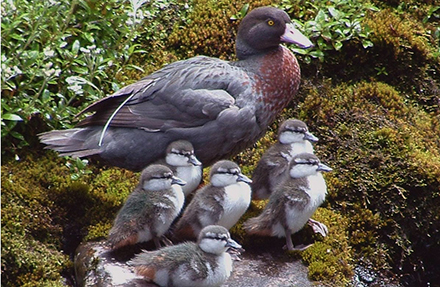The Forest Owners Association (FOA) is promoting New Zealand’s endemic whio, the blue duck for Bird of the Century. Source: Timberbiz
FOA chief executive, Dr Elizabeth Heeg, says whio best represent the iconic pristine native bush environment.
“These birds live in pure fast flowing rivers and streams,” she said.
“They are classed as threatened, nationally vulnerable and have a dwindling population with fewer than 3000 remaining.”
Plantation forests are a critical part of maintaining their population by keeping river systems healthy, Dr Heeg said.
“Whio are indicative of the health of our rivers. These birds are fussy about their choice of habitat, preferring fast flowing, clean water.
“The more breeding pairs of blue duck present, the healthier the water.
“If we look at a century long choice of native bird, the whio is something very special.
“Forest companies are committed to ensuring positive environmental outcomes, and a number are involved in conservation programmes that protect the whio population.”
The Lake Taupo Forest Water Quality Monitoring Program has been a collaborative effort between NZ Forest Managers Ltd, the Lake Taupo Forest Trust, iwi and the wider community.
Data from 25-27 years of monitoring in two catchments has found they are a prime habitat for whio. Plantation forests were also found to preserve water quality and whio habitat in the catchments.
Dr Heeg says that predator control measures in plantation forests are safeguarding the whio population too.
“Stoats are the biggest threat to whio. The high level of predator control occurring in plantation forests gives this species a greater chance of survival.”
“It’s satisfying for these forest companies and staff to see whio thriving and protected by the ecological benefits of plantation forests,” Dr Heeg said.






